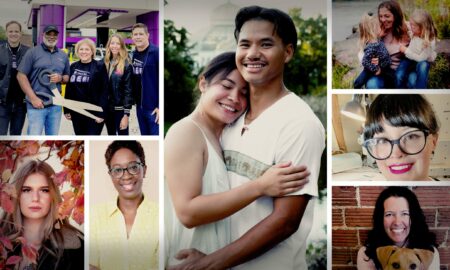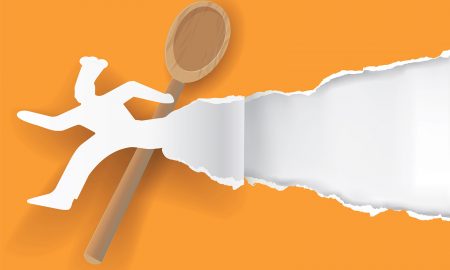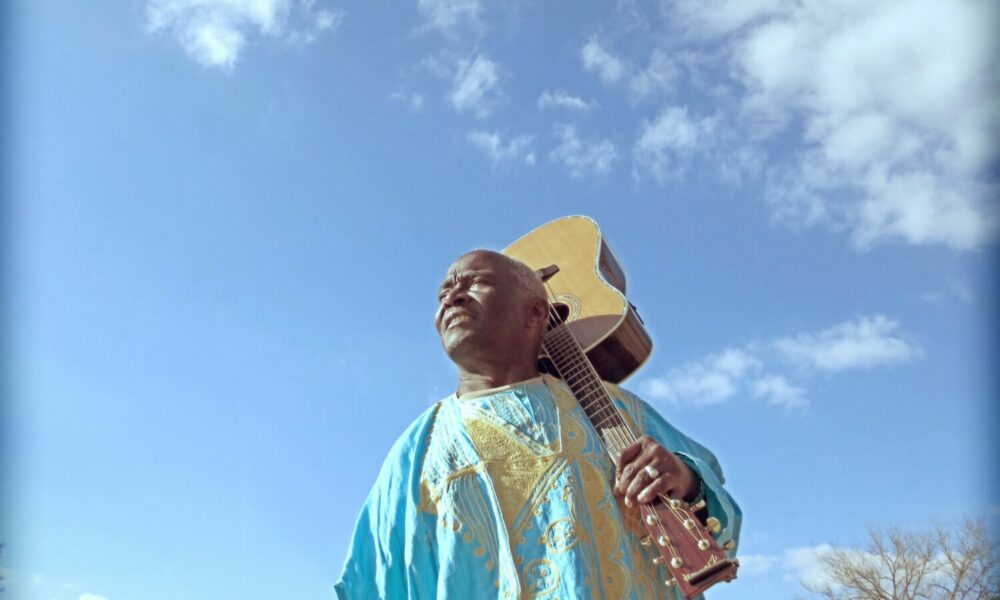

Today we’d like to introduce you to Siama Matuzungidi. He and his wife Dallas Johnson shared this story with us:
Music spoke to Siama Matuzungidi from a young age. During his formative years in rural Bas-Congo (Western DR Congo, formerly Zaire), it was as integral to life as breathing. In the evenings, Siama and his family would sit under the stars, telling stories, singing, drumming, and dancing until the wee hours. Balafon (wooden xylophone) and Ngoma (hand drum) would signal when there was a fun gathering or an important meeting or would call kids home for dinner. People played Likembe (thumb piano) during long walks and Papa used it to help Siama and his eight siblings fall asleep at night. There was no stage in Siama’s hometown! Even the idea of it sounds silly because there, everybody sang together. Music was for everyone to share and joy was always present. Siama’s mom used to tell her kids that there’s not much we can control in this life but we each need to find what makes us happy and do it as much as possible so that our joy can be our gift to the world.
Sometimes Siama’s parents would play Congolese Rumba records on their old Victrola and they’d dance the night away, singing along as they’d spin and sway. Congolese Rumba came about when musicians from the capital city of Kinshasa heard Cuban Rumba on the radio. The infectious syncopation was similar to their own, so they quickly jumped on it and before long, they’d created their own, new Rumba. The songs were romantic and perfect for dancing.
When a Rumba bandleader brought a drum kit and amplifiers to the capital city of Kinshasa, nothing was ever the same again! Musicians combined Congolese Rumba and Soul music and kicked up the tempo to create a new style of music called, “Soukous”. The priests in Siama’s hometown had a radio so Siama’s young friends were abuzz with this new dance music. The guitar is the primary instrument in Soukous so when Siama was 12 years old, he asked the priests for a guitar and was thrilled when they gave him a beautiful new Gibson! The moment he touched that guitar, it captured his heart. He taught himself to play by listening to the radio and for five years, he fervently practiced, his big dreams growing by the day. His father tried to steer him away from music by arranging for him to learn to be a Tailorbut Siama used his new skills to upcycle square suits into bell bottoms and hippie shirts to match his growing afro. He dreamed of the day when he could move to the big city with his guitar and be part of the Soukous scene.
The first groups to play Soukous were older, established Congolese Rumba stars but just as Siama turned 17, a new wave of groups hit the airwaves, featuring musicians his own age! His favorite was a band called Cavacha. Their playing beckoned to Siama and now that there were musicians HIS OWN AGE on the radio(!) he couldn’t bear to wait another moment. He made the 7+ hour bus ride to the city and moved in with his uncle, a college professor who said, “Welcome! Let’s get that silly hair cut off and get you some respectable clothes so you can begin college straight away!”
But Uncle didn’t know, Siama was born under a lucky star. The next-door neighbor was none other than a Soukous superstar from Zaiko Langa Langa. He took an immediate liking to this cool country kid and said, “I know some guys your age that are really gonna like you.”
Within just a couple of days of arriving in this city of millions of people, Siama was introduced to none other than his idols from Cavacha and that same night, they asked him to join their band. Siama refused at first, saying, “No way! I’m not ready! I’ve never even played guitar with anyone. I can’t!”
But they laughed and said, “Don’t worry. You can learn on the stage. You’ll do great!”
Just like that, he became the newest member of one of his favorite bands. They were really encouraging and believed in his talent so much that soon, Siama started believing in himself. The music bug had a firm hold on Siama and it never let go. Over the next years, he would become a sought-after studio musician, recording hundreds of songs, touring the world with popular artists like Sam Mangwana, Kanda Bongo Man, and Tshala Muana and even playing for the presidents of two countries. He lived briefly in Uganda, then in Nairobi, Kenya for 18 years. He lived in Japan and Dubai and toured throughout Africa until the mid-1990s, when Senator Paul Wellstone sent a special letter to the embassy and before he knew it, Siama was living in Minneapolis.
Adjusting to life in MN was challenging. He quickly started learning English (the 8th language he’s been introduced to and his 5th fluent language) and learned to drive. His hands grew sore from working a number of minimum wage jobs like dishwashing at a Holiday Inn and sorting recyclables at a noisy factory. In the evenings, he started meeting musicians and learning new styles of music like Folk and Reggae. He was enlisted as a guitarist in Peter Nelson’s Shangoya and Cyril Paul’s Calypso Monarchs and he helped to form Marimba Africa. He loved his new friends and the new music was inspiring but he missed the perks of being a Soukous musician in Africa, where a venue would enlist a house band to play several shows a week in exchange for room and board, instruments and a driver and fans would buy the band performance outfits like Italian suits and alligator shoes.
Making a living as a side musician in America is a challenge, to say the least, but fate smiled on Siama again when, in 2014, he took a big leap and bet on himself. He applied and was awarded a McKnight Fellowship for Performing Musicians, which included a monetary award as well as coaching from MacPhail Center for Music and Springboard for the Arts. He’d only ever been a guitarist, a sideman, but with his future wife Dallas Johnson as co-singer and manager, Siama’s solo career quickly took off. They started playing everywhere they could, from busking downtown to small events in their neighborhood. In 2015, Siama won a grant to create a lush album titled, “Rivers – from the Congo to the Mississippi.” Rivers was an ambitious project, featuring collaborations with musical artists from many different genres. The album was highlighted in outlets like BBC, NPR, and Songlines Magazine and it led to Siama being featured on the popular (PBS/TPT) series, “Lowertown Line”.
One day while they were busking, a toddler walked up, grabbed a shaker, and started singing and dancing. Her mom happened to be looking for someone to play for the kids at the Midtown Global Market. That chance encounter led to a new branch in their career path. Soon, Siama received a grant to create a kids’ album, “The Land of Yangalele” (which won a Parents’ Choice award, among others). To promote the album, Siama and Dallas began playing libraries and festivals all over MN and they toured throughout the South and performed the new songs at Symphony Space in Manhattan.
Siama loves teaching his happy songs in schools (for Classical MPR’s, “Class Notes” and MacPhail Center for Music’s, “Global Music Initiative”). “I love sharing my music with the younger generation because it’s fun and welcoming so it makes them feel good. Music is a powerful force for healing and community and it’s so important for people to experience that, especially when they’re young.”
Would you say it’s been a smooth road, and if not what are some of the biggest challenges you’ve faced along the way?
> Being far away from family.
> Having to start over and over again in different countries with new people and places and languages.
> Starting out in MN meant struggling in physically-taxing, low-paying jobs and worrying about how to survive day-to-day.
> Losing two years of performing income due to Covid and then, after a long break, having to start over again.
Thanks – so what else should our readers know about your work and what you’re currently focused on?
Siama is best known for his intricate guitar style, spirited vocals, catchy songs, and entrancing traditional African instruments like Thumb Piano and Balafon. He also does a mean hambone and beatbox and he’s known to give an unforgettable yodeling lesson. He loves performing concerts and special events, teaching kids of all ages, teaching in universities, and singing with choirs. He thrives when he’s playing with musicians of different genres because they inspire his creativity. He always composes songs that make people want to sing along because he grew up in a community where everyone sang together and he knows that’s a powerful medicine that the world needs. Although for most of his adult life, Siama exclusively played Soukous music, now he’s rediscovering the traditional music and Congolese Rumba he heard so much as a child.
Siama and Dallas are incubating a number of new projects. They’re collecting traditional kids’ songs from Bas-Congo to feature in an album and an instructional music book and they’re developing a series of kids’ books based on their songs about Siama’s childhood. They’re creating charts of their songs for choirs to use and Siama’s working on a solo guitar album and an one featuring thumb piano. They’ve performed extensively in MN, at places like the the Ordway, Orchestra Hall, Cedar Cultural Center, Walker Arts Center, Minneapolis Institute of Art, Selby Jazz Fest, Reif Center-Grand Rapids, Arrowhead Performing Arts Center-Grand Marais, Lanesboro Art Festival, MN State Fair and many others.
This Spring, they were thrilled to perform their songs with the choirs of Gustavus Adolfus College. They’ll perform April 6th at the Hopkins Center for the Arts and April 11th “Toddler Tuesdays” at the Mall of America. In May you’ll find them at Flint Hills Family Festival (outside the Ordway) and in June they’ll play in Hastings, on the Crossroads Stage at MN Zoo and they’ll tour libraries near Alexandria. In July, they’re performing a concert at Central Park in Faribault and Fireman’s Park in Chaska. (Check out Siama’s website for more).
Is there any advice you’d like to share with our readers who might just be starting out?
“The world needs more music that feels good and connects people. Be loving to yourself. Protect your energy and only be around people who are kind and supportive.”
“Don’t ever give up and never lose hope. Keep creating and practicing because being creative is good for the soul. The best time of my career began when I was over 60 years old. It’s never too late.”
Contact Info:
- Website: www.SiamaMusic.com
- Instagram: https://www.instagram.com/siamamusic/?hl=en
- Facebook: https://www.facebook.com/siamamatuzungidifans/
- Twitter: https://twitter.com/siamamusic?lang=en
- Youtube: https://www.youtube.com/@siamamusicsiamamatuzungidi7301
- SoundCloud: https://soundcloud.com/siama-matuzungidi
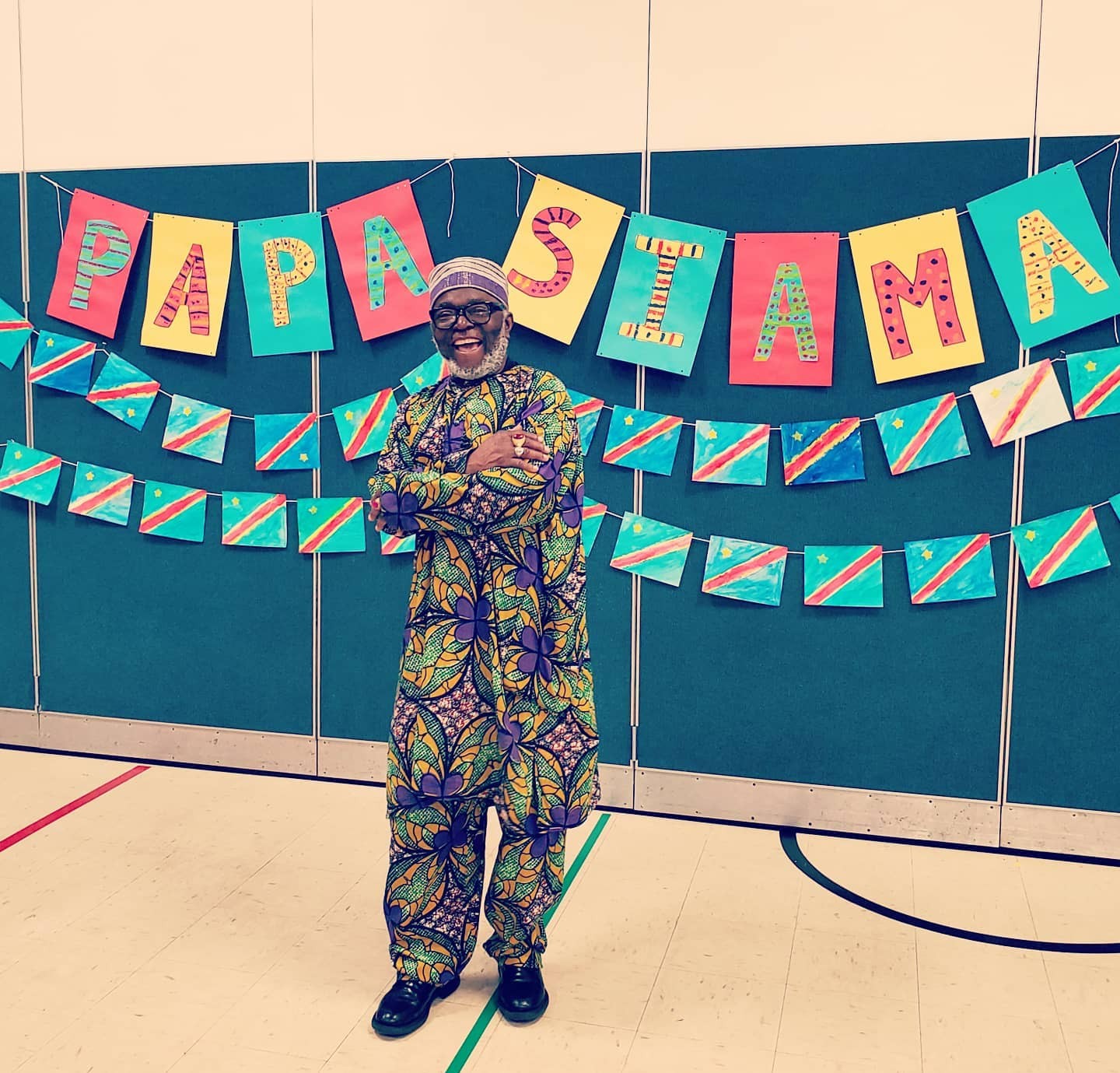

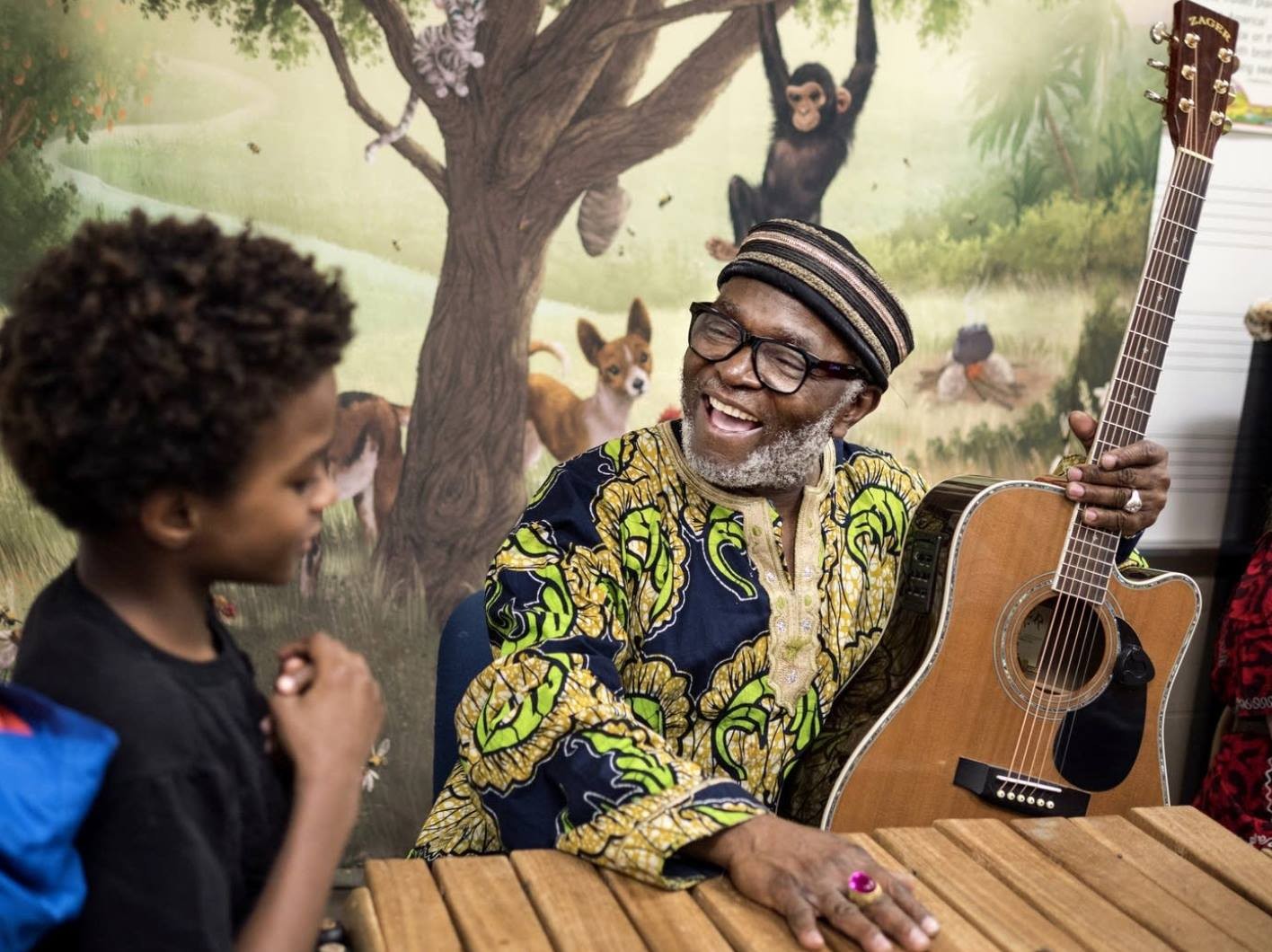
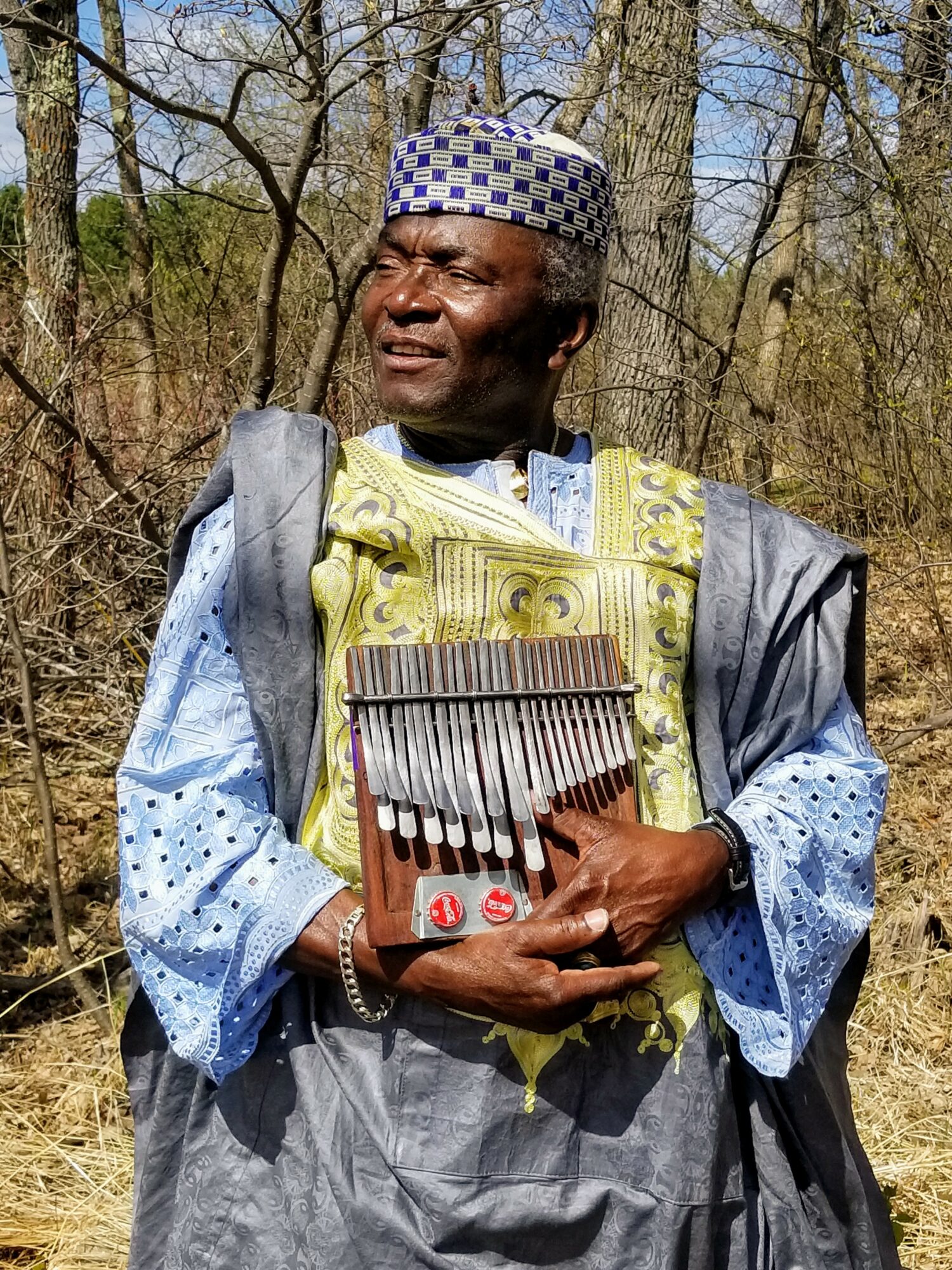 Image Credits
Image Credits
Dallas Johnson, Siama, and Courtney Perry

